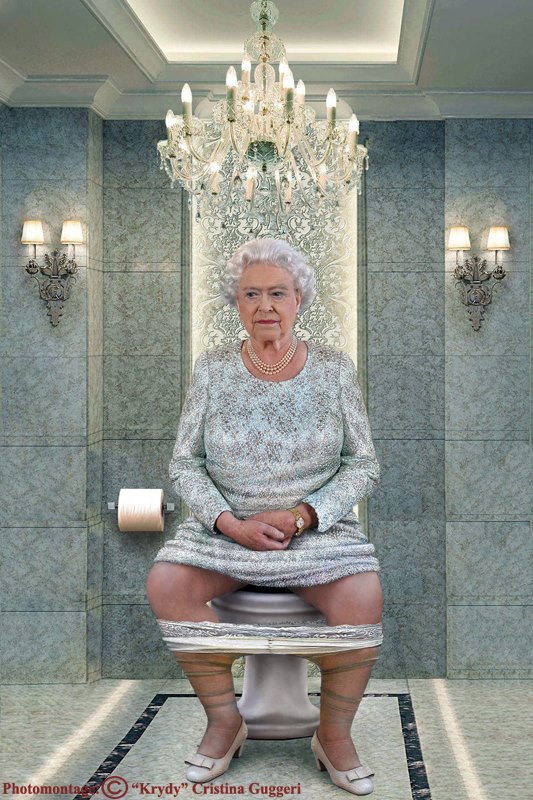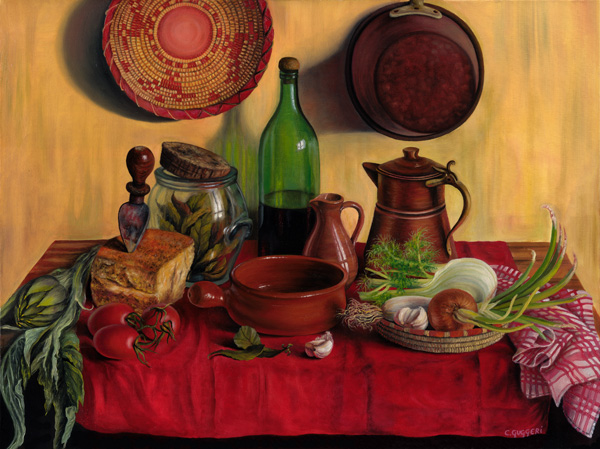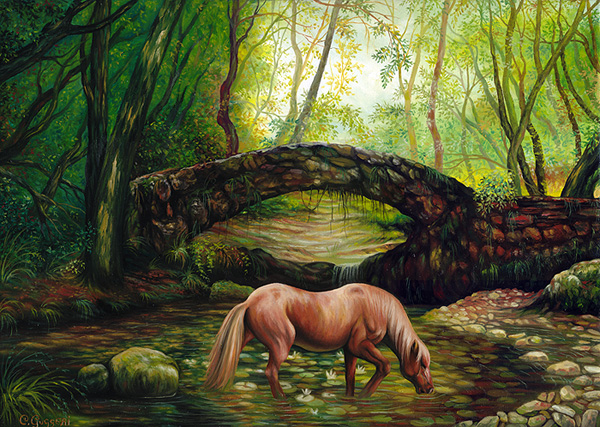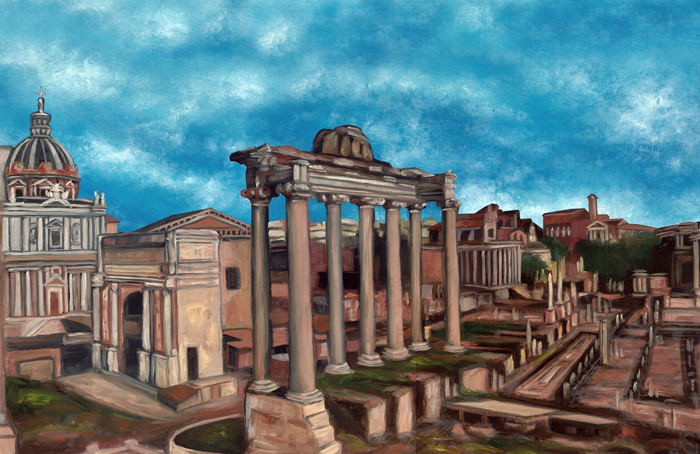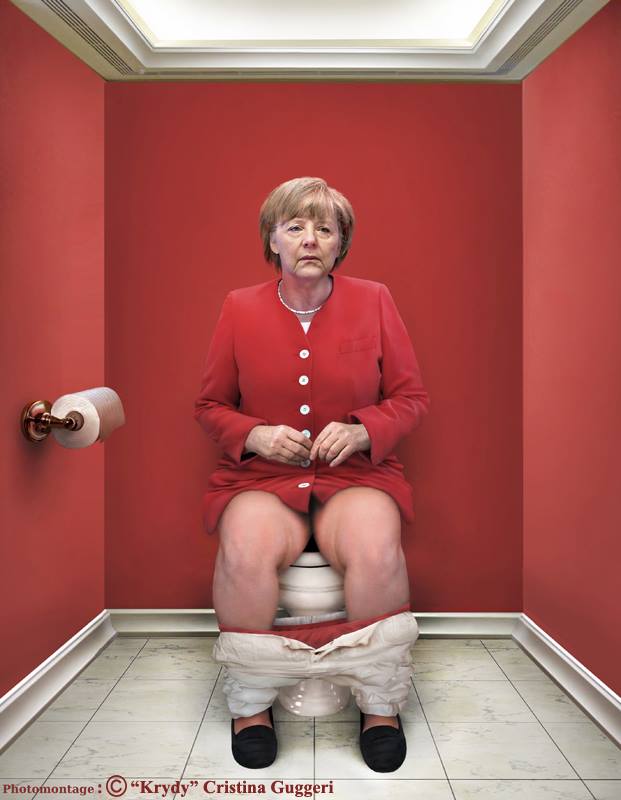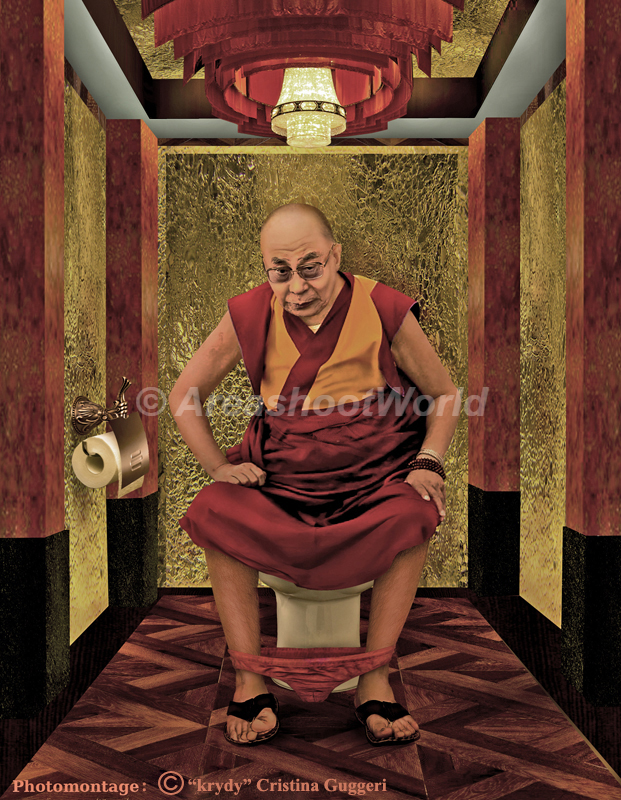Per parlare con Cristina Guggeri ci metto un po’. E pensare che c’è chi dice che con le nuove tecnologie è tutto più semplice! Per iniziare la mia casella di posta elettronica si mangia il suo messaggio prima che io riesca a rispondere. La ricontatto tramite il suo sito. Niente. Provo su Facebook, pagina personale, fan page. Dopo due settimane, scavando tra i milioni di messaggi che le arrivano da ogni dove, Cristina riesce a rispondermi. Perfetto, abbiamo un appuntamento! Driiin, driiin, il telefono squilla ma nessuno risponde. Ci riprovo. Nulla. Le mando un sms. Finalmente, dopo un’ora di tentativi, un’indaffaratissima Cristina mi risponde al telefono, scusandosi per l’attesa. Ed ecco che la nostra intervista può iniziare.
“Ho fatto il liceo artistico, con buoni risultati, ma non l’accademia perché i miei non potevano permettersi di sostenermi a Firenze o all’estero, quindi ho scelto Scienze della Formazione, laureandomi con una tesi che parla comunque di arte. Negli anni ’90 approdo a Parigi, dove rimango per un anno, e dove inizio a esporre anche i miei quadri”. Ci siamo, abbiamo capito che percorso ha fatto Cristina, come si è formata e come è arrivata a farsi conoscere. Eppure in famiglia non è l’unica dotata di una forte vena artistica: “Mio nonno aveva un grande laboratorio orafo dove insieme alla famiglia progettava i gioielli, è stata la prima oreficeria romana. I miei zii sono uno attore e musicista, l’altro pittore, mio padre dipinge chine, i miei fratelli sono fumettisti e architetti. Già da piccola la maestra mi chiamava alla lavagna a disegnare cartine geografiche, quindi mi sono da sempre trovata all’interno dell’ambito artistico.”
Molti di voi forse avranno sentito parlare di Cristina in questi ultimi giorni: i suoi fotomontaggi dei leader del mondo seduti suoi loro troni hanno fatto il giro del globo. Eppure, come artista, Cristina non si occupa solo di arte digitale. I suoi soggetti sono molto vari: dai cavalli alle nature morte, dalle vedute ai nudi, passando per la Sardegna e infine l’arte digitale. “Secondo me un artista deve spaziare a 360 gradi, non può fermarsi su una categoria, o su un genere, fare vedute e basta, o arte digitale e basta; deve sperimentare di tutto. E per questo sono stata anche criticata. Un artista completo è colui che prova differenti metodi e stili. Oggi si tende molto a specializzarsi e a fare delle categorizzazioni”. Differenti soggetti è vero, ma con qualcosa in comune: “C’è molto dell’intimità di chi crea, del suo stile personale e ovviamente la personalità dell’artista stesso. Magari tra un astratto, l’arte digitale e un paesaggio è difficile collegare che appartengono a uno stesso artista, ma per raggiungere la maturità bisogna percorrere diverse strade. Il mio stile è figurativo, tendente al realismo, anche se mi sono dedicata all’astratto per un libro illustrato. L’olio su tela è la mia tecnica preferita, poi dipingo con acrilici, tempere, matite e ho persino inserito oggetti sulla tela che poi ho elaborato digitalmente.” Guardando i disegni di Cristina si rimane quasi catturati, si ha come l’impressione che il soggetto possa da un momento all’altro uscire dalla tela e venire a sedersi lì con te: “Uso un segno molto marcato, mi piace raggiungere la tridimensionalità del soggetto che tende quasi all’iperrealismo.”
Dei dipinti di Cristina, quelli che mi sono rimasti più impressi sono quelli che raccontano la vita quotidiana in Sardegna, la sua terra natale: “Come tutti i sardi ho una sorta di ‘Mal d’Africa’ quando vado via, si ritorna sempre. I sardi sono particolarmente legati alla propria terra perché vivendo su un’isola sono rimasti molto ancorati a tutte le tradizioni e alla cultura”.
Tra i lavori di Cristina, oltre a quelli dipinti a mano libera, troviamo anche molta arte digitale: “Mi sono avvicinata alla digital art quando mi hanno proposto di disegnare delle icone per un progetto informatico e quindi ho deciso di dedicarmi anche alla conoscenza dei programmi più comuni, come i primi Photoshop o Painter. Da lì mi è piaciuto molto associare personaggi famosi con persone comuni e ho iniziato a dedicarmi anche a fotomontaggi veri e propri.” Personaggi famosi e prassi comune: vi dice qualcosa? Dell’arte digitale fa parte anche la serie di fotomontaggi dal titolo “The Daily Duty” (Il Dovere quotidiano). “Il progetto è stato sviluppato circa tre o quattro mesi fa insieme a Franco Corapi, boss di Areashoot World, ne abbiamo discusso quasi casualmente. Franco si aspettava una forte risonanza mediatica, io un po’ meno, l’avevo ideato solo per trovare lavoro negli studi grafici! Invece poi è stato virale, ha girato il mondo, e da lì abbiamo iniziato a pensare ad altri progetti”. “Fare l’iperrealismo – prosegue Cristina – e fare un fotomontaggio con Photoshop è la stessa cosa, cambia solo la tecnica. Bisogna concentrarsi allo stesso modo sul grande numero di particolari presenti, si sostituisce solo il pennello materiale con quello digitale”.
Oltre a essere un’artista, Cristina si è laureata in Scienze della Formazione con una tesi dal titolo “L’arte nello sviluppo della persona”. Ci siamo soffermate un po’ a parlare di quanto disegnare fin dall’infanzia possa far bene per crescere meglio: “L’arte è importantissima nel processo di sviluppo perché inizia ad aprire ed elasticizzare il cervello del bambino, si sviluppa l’idea di poter intraprendere diverse strade e quindi non solo quella della vita che ci circonda; si riescono a elaborare pensieri alternativi che solo lo sviluppo artistico può dare. Pur non essendo necessariamente una persona dotata, solo il fatto di disegnare, progettare e fantasticare su altri pensieri ci fa avere una visione differente delle cose. Molto del mio talento è genetico però penso che anche una persona non geneticamente dotata possa praticare l’arte per arrivare a un arricchimento personale che gli consenta di vivere con molti stimoli”.
Ed eccoci alla domanda fatidica, quella che in ogni intervista di The WalkMan non può mancare: Cristina vi lascia il proprio consiglio per vivere facendo un lavoro artistico: “L’unica cosa che posso dire è che se si vuole fare un po’ di rumore e di successo bisogna essere connessi con il tessuto sociale. L’artista deve essere integrato nella realtà, studiarla ed essere figlio della propria epoca”.
Photo Credits:
http://areashoot.net/category/digital-art/
http://cristinaguggeri.weebly.com/
[divider]ENGLISH VERSION[/divider]
It takes me a bit to talk to Cristina Guggeri, even if somebody says it’s easier to communicate thanks to new technologies! At the beginning my inbox deletes her message before I could answer her. I try to re-contact her via her website. Nothing. I try on Facebook, her personal page, and the fan page. After two weeks, digging among the millions of messages she receives from everywhere, Cristina can answer me. Perfect, we have an appointment! Ring, ring, the phone rings but no one answer. I try again. Nothing. I send her a text message and finally, after an hour, a super-busy Cristina answers the phone, apologizing for the wait. And here our interview can start.
“I attended the art school with good results, but I didn’t go the Academy because my parents couldn’t afford to support me in Florence or abroad. So, I chose Education Sciences, graduating with a thesis that still speaks of art. In the 90s I land to Paris, where I remain for a year, and where I also begin to exhibit my paintings”. Here we are; we got Cristina’s, how did she form and how she came to be known. Yet in the family is not the only one with a strong artistic vein: “My grandfather had a big jewelry workshop where he and the family designed jewels. He had the first Roman jewelry. My uncles are actor and musician, the other is a painter, my father paints chine, and my brothers are cartoonists and architects. Even as a child, the teacher called me to the blackboard to draw maps, so I have always found myself within the scope of art”.
Many of you may have heard of Cristina in the past few days: her photomontages of world leaders sat on their thrones have been around the globe. Yet, as an artist, Cristina is not just dealing with digital art. Her subjects are varied: from horses to still life, from views to naked, via Sardinia and, finally, digital art. “I think an artist has to range at 360 degrees, he just cannot stop on one category, or one genre, only views, or only digital art; an artist should experience everything. And for this I have also been criticized. A complete artist tries different methods and styles. Today we tend to specialize and do a lot of categorizations”. Different subjects it is true, but with something in common: “There is a lot of intimacy of those who create; about his personal style and, of course, the personality of the artist himself. Maybe between abstract, digital art and landscape it is difficult to connect that all of them belong to the same artist, but to reach maturity you need to travel different roads. My style is figurative, it tends to realism although I dedicated to the abstract for a picture book. Oil on canvas is my favorite technique, then I paint with acrylics, gouache, pencil and I even inserted objects on the canvas that I then digitally process”. Looking at the drawings of Cristina you almost remain caught; you get the feeling that the subject can at any moment come out of the canvas and sit there with you: “ I use a very marked sign, I like to reach the three-dimensionality of the subject that almost tends to hyperrealism”.
Among Cristina’s paintings what impressed me most were the ones telling the daily life in Sardinia, her native land: “Like all Sardinians, I have a sort of “Africa blues” when I leave, I always comes back then. Sardinians are particularly attached to their land because living on an island they are well anchored to all the traditions and their culture”.
In addition to paintings by hand, we also find a lot of digital art: “I approached the digital art when I was asked to draw the icons for an IT project, and so I decided to dedicate myself to the knowledge of the more common programs as Photoshop or Painter. I really liked to associate celebrities and ordinary people and I began to devote even to real photomontages”. Celebrities and common people: does it tell you something? Also the series of photomontages entitled “The Daily Duty” is digital art. “The project was developed about three or four months ago with Franco Corapi, head of Areashoot World. We discussed about it almost casually. Franco was expecting a strong media coverage, I did a little less; I only had designed it to find a job in graphic studies! But then it was viral, it traveled the world, and from there we started to think of other projects”. “Do hyperrealism – continues Cristina – and make a montage with Photoshop is the same; only the technique changes. You have to focus in the same way on the large number of details, you only replace the brush with the digital”.
In addition of being an artist, Cristina graduated in Education Sciences with a thesis entitled “L’arte nello sviluppo della persona” [Art in the development of the person N.d.T.]. We stood a bit talking about how to draw since childhood might be good to grow better: “Art is very important in the development process because it starts to open and to make more elastic the child’s brain; you develop the idea of take different roads and not just that of the life around you. You can process alternative thoughts that only artistic development can give. Even not necessarily being a gifted person, just drawing, designing and fantasizing about other thoughts, make us have a different view of things. Much of my talent is genetic but I think that even a person not genetically gifted could practice art to arrive at a personal enrichment that allows him to live with many incentives”.
Finally, the fateful question, the one that cannot miss in every interview of The WalkMan: Cristina leaves you her advice for living doing art work: “The only thing I can say is that if you want to do a little noise and success, you need to be connected with the social fabric. The artist must be integrated into reality, study it and be a child of his age”.
Traduzione a cura di Daniela De Angelis

